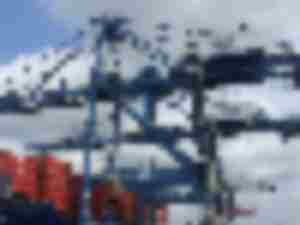Stopping Tank Corrosion in the Transportation Sector
In truck, rail tankers and beyond, Chemically Bonded Phosphate Ceramics can stop corrosion, improve safety, extend equipment life and minimize maintenance and downtime
PMSA Says California Must “Accelerate Public Investments” To Meet Sustainable Freight Goals
California’s recently announced Sustainable Freight Action Plan calls for truck, rail and waterborne transportation to dramatically reduce carbon emissions by 2030, and will require California to “accelerate public investments” in the maritime, trucking and rail sectors, according to the Pacific Merchants Shipping Association (PMSA).
Gov. Pence visits North Carolina port
Count the Republican vice presidential candidate among those impressed with the North Carolina State Ports Authority’s Port of Wilmington.
Fednav announces change at the top
A major corporate leadership change has been announced at Fednav Limited, Canada’s largest ocean-going dry bulk shipowning and chartering group as well as operator of 12 terminals on the Great Lakes, St. Lawrence River and the East and Gulf coasts.
Taking the Helm - It’s Your Freight!
Whether you use an intermediary or navigate the often confusing sea of logistic choices one fact remains, it's your merchandise and you need to understand how it moves.
TIR - Crossing Boarders, Opening Frontiers
The TIR Carnet is the only global "in-transit" document in existence today with over 35,000 road operators worldwide authorized to execute 1.5 million border crossings each year.
PMA/ILWU Will Discuss Contract Extension
In a potential breakthrough for Pacific Coast labor peace, the Pacific Maritime Association (PMA) announced that it will begin discussions with the International Longshore and Warehouse Union (ILWU) to extend the current PMA/ILWU contract which expires in 2019.
Paying The Freight: Accessorial Charges - What’s fair?
The British International Freight Association recently supported the latest challenge by UK shippers against ocean freight surcharges. For years the Global Shippers Forum, National Industrial Transportation League and the ESC have also been complaining about carrier surcharges on behalf of their members. Let’s examine some of these charges, consider why they were enacted and see if they have any merit.
Lack of federal funds is leaving ro-ro ports high and dry
With new vehicle sales and production in North America still running at record levels, the region’s vehicle-handling ports are running out of room. Larger vessels, sometimes arriving in bunches, are putting more pressure on terminals and yard space. Land for expansion, meanwhile, is hotly contested because port authorities have competing claims on its use, whether with the much larger container trade, or with real estate developers keen to invest in waterfront property.
Bugs in the Box
The Asian Longhorn, native to China and other Asian countries, was now threatening the mass destruction of trees almost seven thousand miles away. It was inconceivable! How could this happen?
© Copyright 1999–2024 American Journal of Transportation. All Rights Reserved












